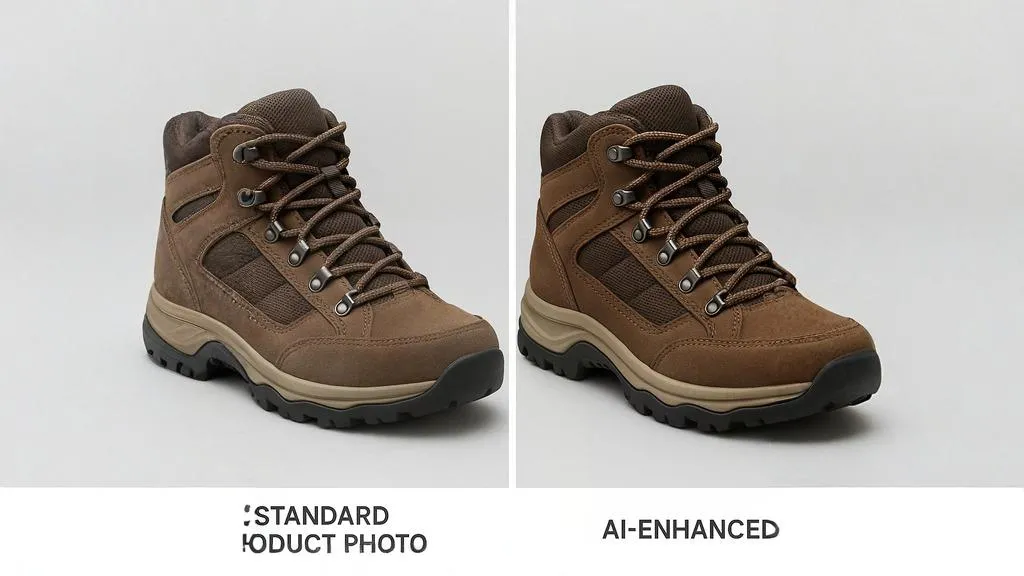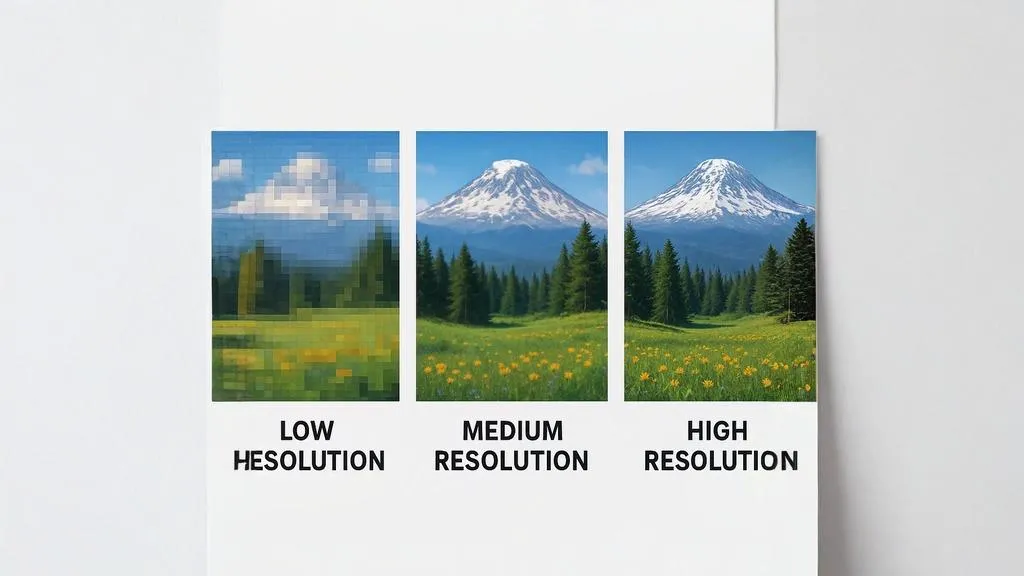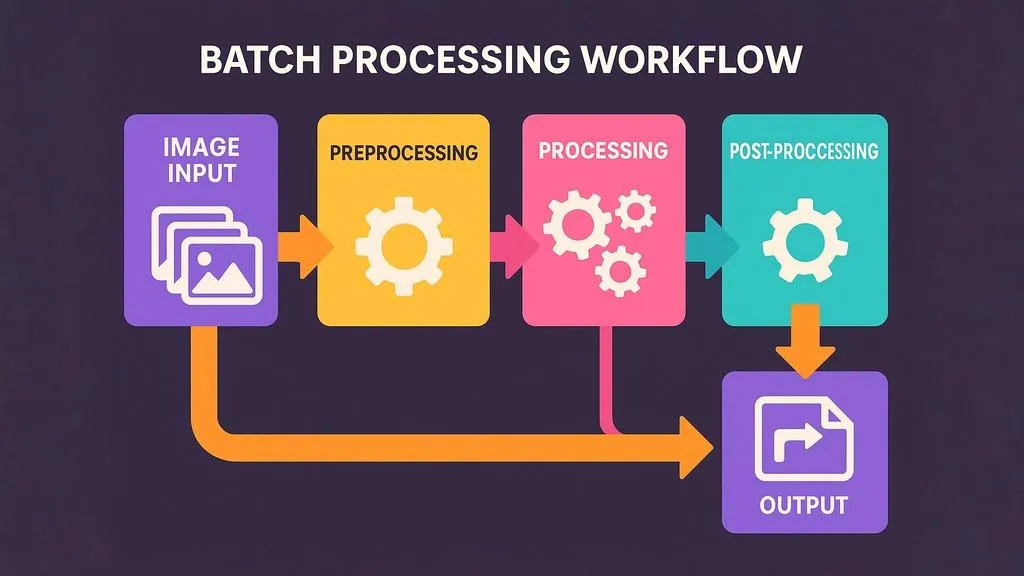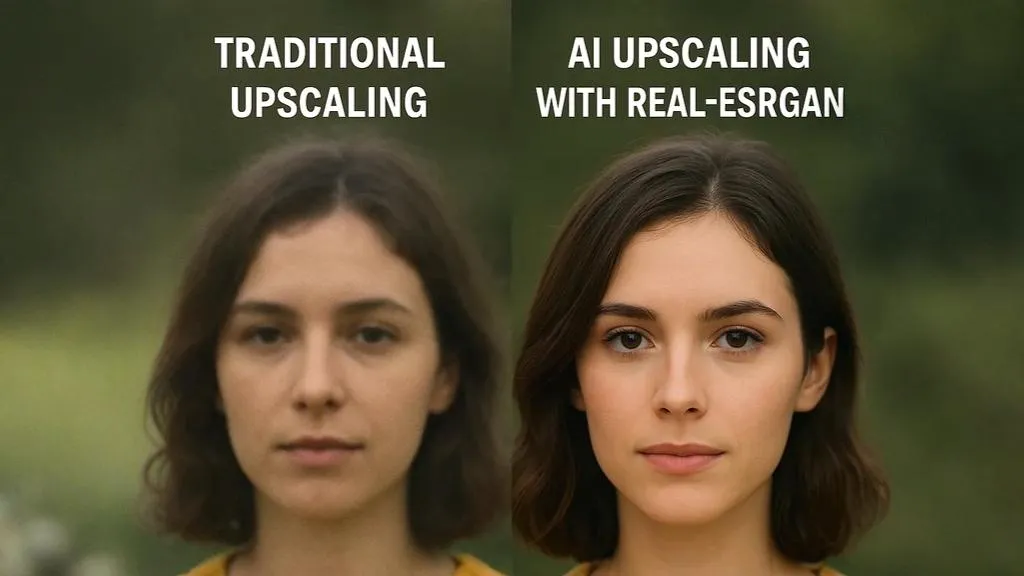In the competitive world of e-commerce, product images can make or break your sales. Research consistently shows that high-quality product images significantly impact conversion rates, with studies indicating that enhanced product photography can increase sales by up to 30%.
The challenge? Professional product photography is expensive and time-consuming. Many online retailers, especially small businesses, struggle to create the high-resolution, detailed images that today's consumers expect. This is where AI image upscaling comes in, offering a game-changing solution for e-commerce businesses of all sizes.

Standard product photo (left) compared to an AI-enhanced version (right) showing improved detail and clarity
Why Image Quality Matters in E-commerce
Before diving into how AI can enhance your product images, let's understand why image quality is so crucial for online sales:
The "Touch and Feel" Substitute
Unlike brick-and-mortar stores, online shoppers can't physically handle products before making a purchase decision. High-quality images that show fine details serve as the next best thing, helping customers feel confident about what they're buying.
First Impressions Matter
According to eye-tracking studies, shoppers spend 50% of their time looking at product images when browsing online stores. Your images create the critical first impression that determines whether a visitor becomes a customer.
Reduce Return Rates
Detailed, accurate product images set proper expectations. When customers can clearly see product details, textures, and colors, they're less likely to be disappointed when the item arrives – reducing costly returns.
Mobile Shopping Experience
With over 60% of e-commerce traffic now coming from mobile devices, high-resolution images that can be zoomed in on small screens have become essential for providing a good shopping experience.
"We saw a 24% increase in conversion rate after implementing AI-enhanced product images across our catalog. The ability to show fine details and textures made a dramatic difference in customer confidence." – Sarah Chen, Online Boutique Owner
Common Challenges with E-commerce Product Photography
E-commerce businesses frequently face these image-related challenges:
Limited Resources
- Professional photography services are expensive
- In-house photography requires equipment, space, and expertise
- Time constraints make it difficult to reshoot products regularly
Technical Limitations
- Supplier-provided images are often low resolution
- Older product photos may not meet current standards
- Inconsistent image quality across product catalogs
- Limited ability to show fine details and textures
Scale and Consistency
- Maintaining consistent quality across hundreds or thousands of products
- Regularly updating images to keep up with platform requirements
- Creating multiple image variations for different sales channels
Case Study: Handcrafted Jewelry Store
A handmade jewelry business was struggling with product photos that failed to showcase the intricate details of their pieces. Despite using a decent camera, the fine engravings and textures weren't visible in their standard photos. After implementing AI upscaling, they were able to reveal the craftsmanship details that justified their premium pricing, resulting in a 35% increase in average order value.
How AI Image Upscaling Transforms E-commerce Photography
AI upscaling technology like Real-ESRGAN offers several powerful benefits for e-commerce businesses:
Enhanced Detail and Clarity
AI upscaling can reveal intricate product details that might be barely visible in original photos. This is particularly valuable for:
- Textiles and fabrics (showing weave patterns and textures)
- Jewelry and accessories (highlighting craftsmanship and fine details)
- Electronics (making text on buttons and ports readable)
- Home décor (showcasing material quality and finishing)
Improved Zoom Functionality
Upscaled images allow for better zoom experiences, enabling customers to inspect products closely without losing clarity. Studies show that stores with functional zoom capabilities convert up to 15% better than those without.
Consistency Across Your Catalog
AI upscaling can bring older or supplier-provided images up to the same quality standard as your newer photos, creating a consistent, professional look across your entire product catalog.
Multi-channel Optimization
Different sales channels (your website, Amazon, Instagram, etc.) have different image requirements. Upscaled high-resolution images give you the flexibility to optimize for all platforms from a single source.
Practical Applications in Different E-commerce Categories
Fashion and Apparel
AI upscaling is particularly effective for fashion e-commerce, where fabric details, stitching quality, and patterns are key selling points:
- Highlight fabric textures (e.g., the nap of velvet, the weave of linen)
- Show intricate patterns and prints in detail
- Make clothing labels and care instructions readable
- Enhance visibility of embroidery and embellishments
Jewelry and Accessories
For high-value items where craftsmanship justifies the price:
- Reveal intricate metalwork details
- Show the clarity and faceting of gemstones
- Highlight engraving and hallmarks
- Demonstrate the quality of clasps and findings
Home Goods and Furniture
Large items benefit from enhanced detail visibility:
- Showcase wood grain and finish quality
- Highlight upholstery details and seam work
- Make small decorative elements visible
- Show the texture of materials like marble, granite, or ceramics
Electronics and Gadgets
Technical products need to demonstrate functionality:
- Make port labels and button text readable
- Show screen quality and resolution
- Highlight build quality and materials
- Display small components clearly
Implementing AI Image Enhancement in Your E-commerce Workflow
Ready to transform your product images? Here's a step-by-step guide to implementing AI upscaling in your workflow:
Step 1: Audit Your Current Images
Start by evaluating your existing product images:
- Identify images that lack detail or appear blurry when zoomed
- Prioritize high-value products or those with high traffic but low conversion
- Note products where fine details are key selling points
- Look for inconsistencies in image quality across your catalog
Step 2: Prepare Your Original Images
Before upscaling:
- Organize your original product images in a structured way
- Ensure images are properly cropped and aligned
- Remove any temporary watermarks or overlays
- For best results, start with the highest quality originals available
Step 3: Upscale with AI Technology
Using Image AI Upscale's tool:
- Upload your product images individually or in batch mode
- Choose an appropriate upscaling factor (2x is often ideal for e-commerce)
- Select the "Product Photography" enhancement option if available
- Process and download your enhanced images
Step 4: Optimize for Your Platform
After upscaling:
- Crop and resize as needed for different platforms and placements
- Compress appropriately to balance quality and loading speed
- Add any necessary watermarks or branding
- Generate any additional formats required (e.g., WebP for your website)
Step 5: Implement and Test
Finally:
- Update your product listings with enhanced images
- Ensure zoom functionality works properly
- Test loading times on mobile devices
- Compare performance metrics before and after implementation
Pro Tip: Consider A/B testing enhanced images against your original photos for a few key products. This can help you quantify the exact impact on your conversion rates and justify further investment in image enhancement.
Best Practices for E-commerce Product Images
Combine these best practices with AI upscaling for maximum impact:
Consistency is Key
- Maintain consistent lighting, backgrounds, and angles across products
- Use a standard approach to showing scale and size
- Keep styling consistent within product categories
Multiple Images per Product
- Offer at least 5-7 images for each product
- Show different angles and perspectives
- Include close-ups of important details
- Consider lifestyle images showing the product in use
Technical Considerations
- Aim for 2000×2000 pixels as a standard size for main product images
- Enable zoom functionality that maintains clarity
- Ensure fast loading through proper compression
- Use descriptive alt text for accessibility and SEO
Measuring the Impact: Key Metrics to Track
After implementing AI-enhanced product images, monitor these metrics to quantify the impact:
Conversion Rate
The most direct indicator of image impact. Compare conversion rates before and after implementing enhanced images, ideally using A/B testing for accurate measurement.
Average Order Value
Better images often result in customers purchasing higher-priced items or adding more products to their carts, increasing overall order value.
Return Rate
Clearer, more detailed images set accurate expectations, potentially reducing returns due to "not as described" or "looks different than the photo" reasons.
Time on Product Pages
Enhanced images typically increase engagement. Longer time spent viewing products can indicate increased interest and consideration.
Social Sharing
High-quality images are more likely to be shared on social media, extending your reach organically.
| Metric | Average Improvement with AI-Enhanced Images | Industry Benchmark |
|---|---|---|
| Conversion Rate | 15-30% increase | 2-3% standard e-commerce conversion |
| Average Order Value | 10-20% increase | Varies by industry |
| Return Rate | 5-15% reduction | 20-30% average e-commerce return rate |
| Time on Product Pages | 30-50% increase | 45-60 seconds average |
Cost-Benefit Analysis: Is AI Upscaling Worth It?
Let's break down the typical return on investment for e-commerce businesses:
Costs
- AI upscaling service: Typically $0.05-0.20 per image depending on volume
- Implementation time: 1-2 minutes per product to process and update listings
- Additional storage: Minimal costs for larger image files
Benefits
- Increased sales: 15-30% conversion rate improvement
- Reduced returns: Saving on shipping and processing costs
- Competitive advantage: Professional appearance compared to competitors
- Repurposing potential: High-quality images can be used across multiple channels
For a typical e-commerce business with 100 products and a 3% conversion rate, improving image quality could result in 15-30 additional sales per 1,000 visitors. At an average order value of $50, that's an additional $750-1,500 in revenue – far outweighing the $5-20 investment in image enhancement.
Future Trends: What's Next for E-commerce Imagery
The landscape of e-commerce product imagery continues to evolve. Here's what to watch for:
360-Degree and 3D Product Views
Enhanced imagery is moving beyond static photos toward interactive experiences. AI upscaling can help improve the quality of each frame in 360-degree views.
Augmented Reality Try-On
AR experiences require high-resolution textures and details to look realistic. Upscaled product images provide better source material for AR implementations.
Video Product Showcases
Short product videos are becoming essential for e-commerce. AI technology can enhance video quality just as it does for static images.
Automated Background Removal
Combining AI upscaling with automated background removal creates versatile, high-quality product images that can be placed in various contexts.
Conclusion
In the increasingly competitive e-commerce landscape, product image quality is a key differentiator that directly impacts your bottom line. AI image upscaling technology offers an accessible, cost-effective way to enhance your product photography without expensive reshoots or specialized equipment.
By implementing AI-enhanced product images, you're not just improving the visual appeal of your store – you're providing customers with the detailed information they need to make confident purchasing decisions. The result? Higher conversion rates, increased average order values, and fewer returns.
Ready to transform your product images and boost your e-commerce performance? Try our AI upscaling tool today and see the difference enhanced product photography can make for your online store.
Have a large product catalog or need customized batch processing? Contact our team for enterprise solutions tailored to your e-commerce business.


